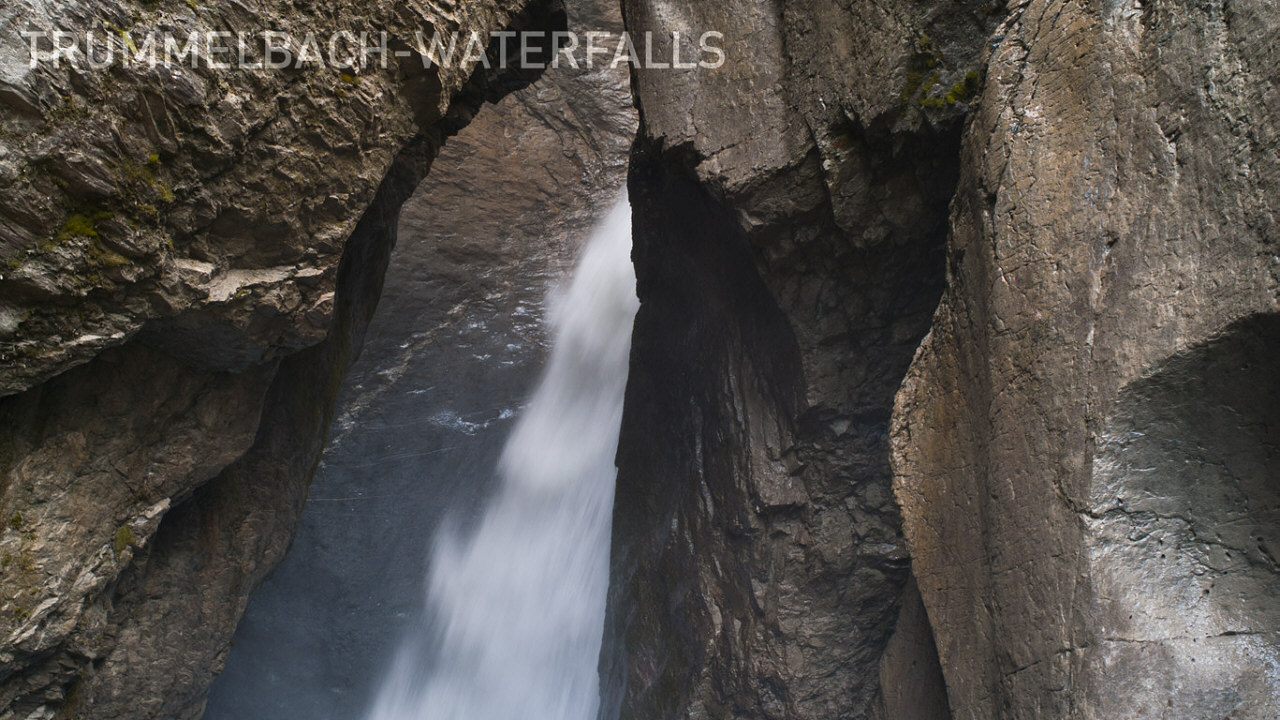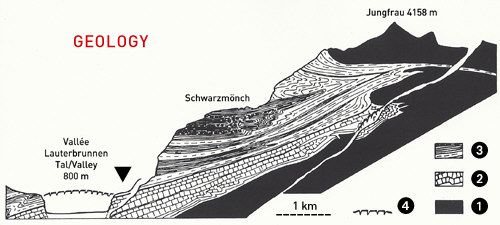
The rock eaten away by the Trümmelbach consists of thick beds of limestone (2). These were deposited as calcareous mud 140 million years ago, in the Upper Jurassic period, in the shallow sea that then covered the entire European continent. 100 million years later, the Bernese, Oberland region was included in the process that led to the creation of the Alps. The folding of the earth's crust led to the limestone (2) being covered over by several mighty strata (3) that had been deposited further to the south (the Wildhom layer), which compressed it. The plications and flow lines are still clearly visible on the polished walls of the Trümmelbach. They testify to the enormous pressures to which these strata (3) were exposed as the Alps were formed. Even the earth's crust below the limestone layer, consisting of crystalline primeval rock (1), which had at one time formed the bed of the shallow Jurassic Sea, was caught up in this folding movement. Coarse flakes of primeval rock were thrust upwards and today constitute the peak of the Jungfrau (1). They rise up high above the marine deposits that originally covered them.
However, the Alps did not attain their present height until later, about 10 million years ago, when compaction by uplift commenced that is still going on. At the same time rain, snow and ice began to wear away the mountain peaks and to carry the rock down to the lowest levels. This is the key to an understanding of the history of the Alps, which can be studied by examining the steep slopes of valleys to find out what kinds of rock they consist of and the way they are piled up in strata on top of each other. 500'000 years ago the glaciers of the Ice Ages began to carve out the valleys we know today and to clear away a lot of the old debris. The smooth rocky walls of the Lauterbrunnen valley bear witness to the erosive force of the ice that at one time filled the valley right up to its rim (4).
Today the Staubbach and its sister streamspour freely as waterfalls over cliffs hollowed out by the ice. But the Trümmelbach already began to bore away at the rock while the valley was still full of ice (4). The melting snow and ice that poured off the sides of the glacier set in motion a so-called moulin, or glaciermill, which must have continued over much of the last Ice Age and fortunately was not blocked off by the scree of a moraine. Through the shaft formed by this moulin the water from the melting snow and ice on the surface found its way down to the base of the glacier and then bubbled out from beneath the ice somewhere near Lauterbrunnen.
In this way the Trümmelbach has been thundering through the rock for the last 15'000 - 20'000 years, as an expressive testimony to the last Ice Age.
by Prof. Dr. Hottinger,
Geological Institute, University of Basle

